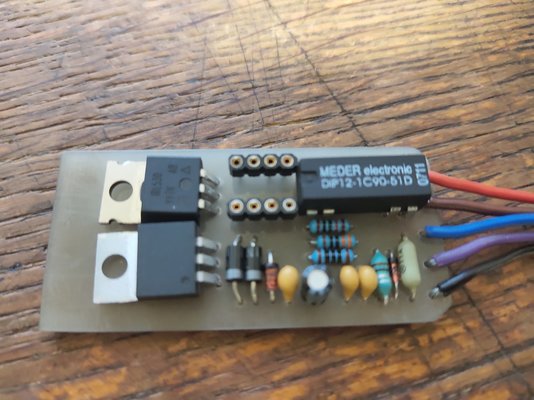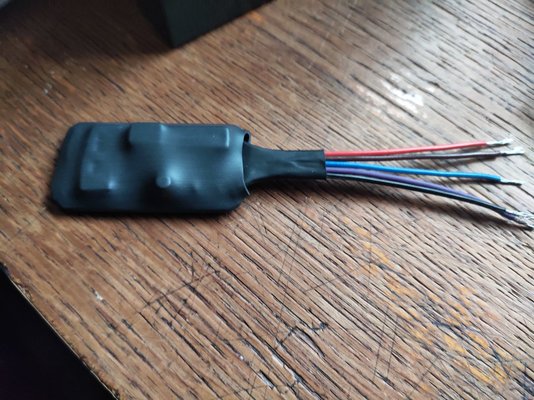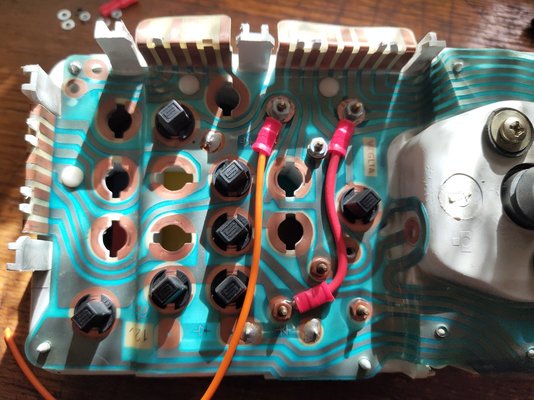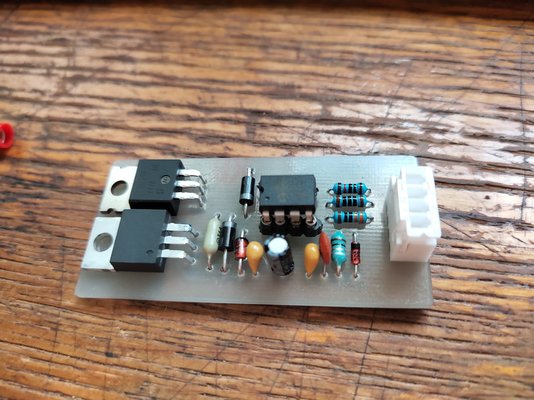Hello,
Let me present my idea for a temperature gauge solution that I used on my Renault 4. Since adding modern universal temperature gauges is not something I like, as I believe it ruins the interior look of the car, I decided to use the fuel level gauge for this purpose.
I designed a simple PCB that converts the signal from the sensor, which is installed on the coolant pump (a sensor from a Renault 5 was used), and displays the value instead of the fuel level. A switch for toggling between the two is installed in the unused space below the fog light switch.
I set my scale to 0-60-80-90-115°C, with the marks arranged from left to right. If the reading goes beyond the second small dot, I know I must stop driving.
The circuit connection is quite simple. The only modification to the wiring that needs to be done is cutting one wire that leads to the dashboard connector.


The second version I created for someone else is somewhat less discreet and requires more extensive modification to the instrument cluster itself. I used an additional fuel level gauge, customized with a custom-made scale, and slightly modified it to fit on the top side of the instrument cluster. (I believe a gauge from a Renault Express could also be used, though it is quite rare.)
It is also controlled via a custom-made circuit and a sensor installed on the water pump, where a threaded hole was conveniently available.


Let me present my idea for a temperature gauge solution that I used on my Renault 4. Since adding modern universal temperature gauges is not something I like, as I believe it ruins the interior look of the car, I decided to use the fuel level gauge for this purpose.
I designed a simple PCB that converts the signal from the sensor, which is installed on the coolant pump (a sensor from a Renault 5 was used), and displays the value instead of the fuel level. A switch for toggling between the two is installed in the unused space below the fog light switch.
I set my scale to 0-60-80-90-115°C, with the marks arranged from left to right. If the reading goes beyond the second small dot, I know I must stop driving.
The circuit connection is quite simple. The only modification to the wiring that needs to be done is cutting one wire that leads to the dashboard connector.


The second version I created for someone else is somewhat less discreet and requires more extensive modification to the instrument cluster itself. I used an additional fuel level gauge, customized with a custom-made scale, and slightly modified it to fit on the top side of the instrument cluster. (I believe a gauge from a Renault Express could also be used, though it is quite rare.)
It is also controlled via a custom-made circuit and a sensor installed on the water pump, where a threaded hole was conveniently available.






